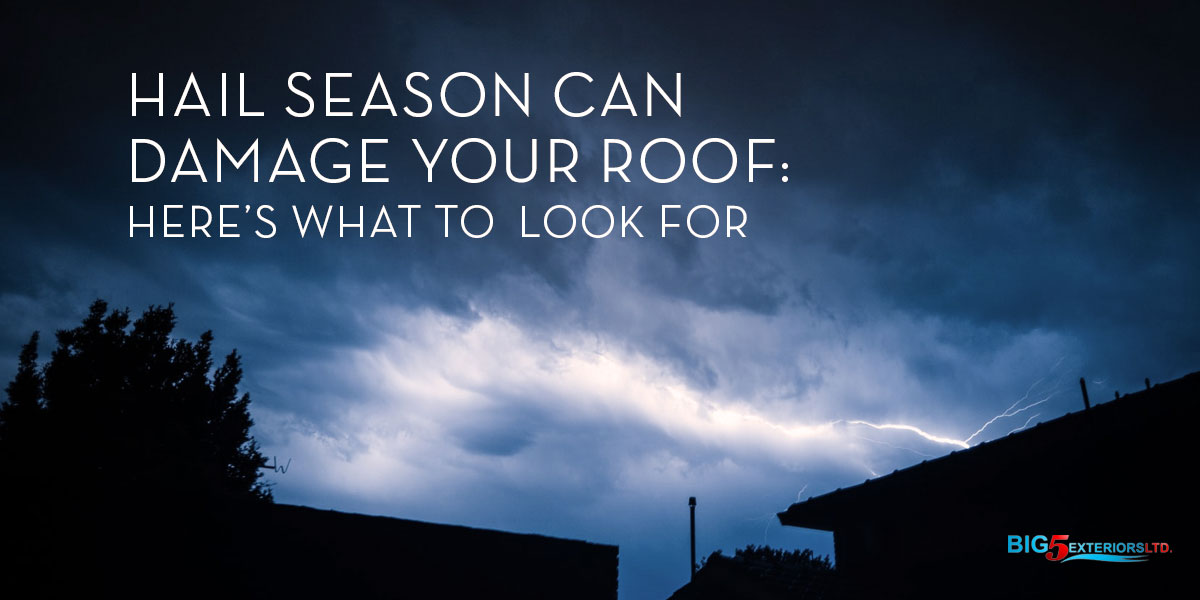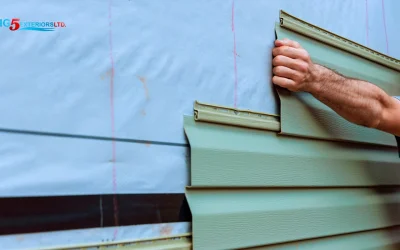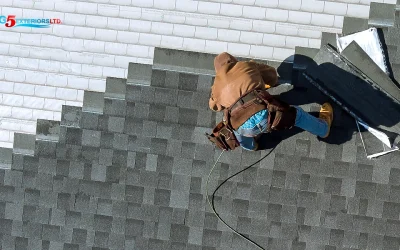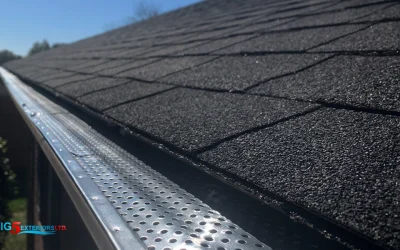Summary:
- Hail season can cause damage to roofs in Alberta during severe thunderstorms.
- There are no foolproof ways to prevent hail damage, but there are ways to mitigate it.
- To mitigate hail damage, deal with pre-existing roof damage, remove flimsy trees, and consider impact-resistant shingles and protective coverings.
- After a hail storm, check the roof for damage such as dented eavestroughs, dented shingles, pockmarked vents, and damage around the roof.
- Repairing hail damage should be done by a licensed professional contractor.
- Hail damage should never be ignored, and recognizing the signs of hail damage is crucial.
As Albertans, we breathe a giant collective sigh of relief when the snow melts and the weather turns warm… well, warmer, anyway. However, once the snow is gone there’s something else to look out for: severe thunderstorms.
The province’s weather patterns and geographical location put Alberta directly in the line of fire for these extreme weather events from early June to late September each year — and they’re becoming more frequent over time. That means Alberta homeowners have to be extra proactive when protecting their property from the damage hail can cause (less so if your home has hardie board siding).
We’re going to show you how to identify hail damage on your roof and give you some tips for fixing it. While certain tasks should only be carried out by qualified roofing professionals, there’s still plenty you can do to deal with hail-related problems.
Read on, and use this guide to prepare yourself for the summer storms!
First Things First: Can You Prevent Hail Damage?

Many of you would probably prefer us to tell you how you can prevent hail damage to your homes, rather than jumping straight into repair tips. Unfortunately, there’s really no way to “hail-proof” a home completely. That’s mostly because hail is fairly unpredictable — some hailstones are pea-sized, while the largest ever recorded in the province have been as large as grapefruits. Bottom line: a bad hail storm is likely to cause some damage no matter what you do.
However, there’s actually a lot you can do to mitigate the damage hail storms are able to inflict. Try using these tips to ensure that the effects of the next hail storm you experience are as mild as possible:
- Make sure to deal with any pre-existing damage on your roof. Already-weakened areas will be particularly vulnerable to hail’s potentially devastating effects.
- Remove flimsy trees from the area surrounding your home. The last thing you want is a tree falling over during a harsh storm and landing on top of your house. Even branches that hang near the roof should be trimmed away before a storm is likely to hit.
- Consider impact-resistant shingles and protective coverings. While it’s true that not many products can stand up to grapefruit-sized hail, certain products (mostly made from metal) will offer at least some protection from smaller hailstones. Metal shingles can be more than twice as expensive as their asphalt counterparts though, so make sure to research this option carefully to see whether it’s right for your budget.
Following these steps will make it much harder for hail to seriously damage your roof. However, sometimes hail damage is inevitable. What then?
Identifying Hail Damage
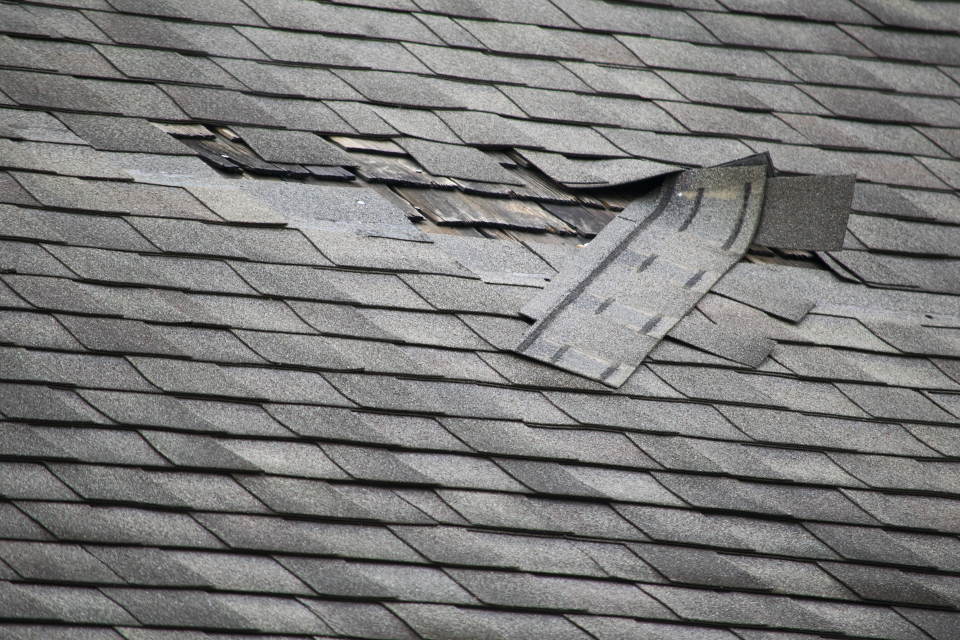
Once a hail storm has passed, it’s important to take note of its effects. If you’re able to climb up to your roof using a properly-secured ladder, look out for these common signs of hail damage (and if you can’t climb up or aren’t comfortable doing so, consider calling an inspector to do it for you):
- Dented eavestroughs: one of the first telltale signs of a hail-damaged roof might be dents in the eavestroughs that carry rainwater away from your home. Don’t just look for big divots, though — sometimes the impacts hail makes in these areas are quite small. Many DIY homeowners use the damage sustained by their eavestroughs after a hail storm to form a ballpark estimate of how serious damage to the entire roof might be — but we recommend checking the whole thing if you can.
- Dented shingles: when hail hits a standard asphalt shingle hard enough, it crushes the fibreglass matting behind it and leaves an indentation. These dents are typically asymmetrical in shape and have a softer feeling than normal shingles (indicating that the fibreglass has cracked). This isn’t just cosmetic damage either; it makes the affected area weaker than normal and less effective at protecting the roof from future hail storms or other elements. This is one of the most common and obvious forms of hail damage.
- Pockmarked vents: metal vents and chimneys can also get banged up from hail. In such cases, their regular smooth surfaces should be covered in pockmarks. Look out for skylights too, which can sometimes be smashed by large chunks of hail.
- Damage around the roof: remember, if hail has caused damage to your roof, it’s very unlikely that it hasn’t also affected the surrounding areas. On your way up or down from the roof, be sure to check things like vinyl siding and window sills for impact marks.
You’ll want to deal with any of the above as soon as possible so that water doesn’t make its way under your roof and put your ceilings at risk. Other forms of damage, such as cracking shingles or granule loss, can also be confused for hail damage; however, these are just signs of regular wear and tear — and while they may still be warning signs to replace your roof, you shouldn’t use them to file an insurance claim for hail-related damages.
Repairing Damage Caused by Hail
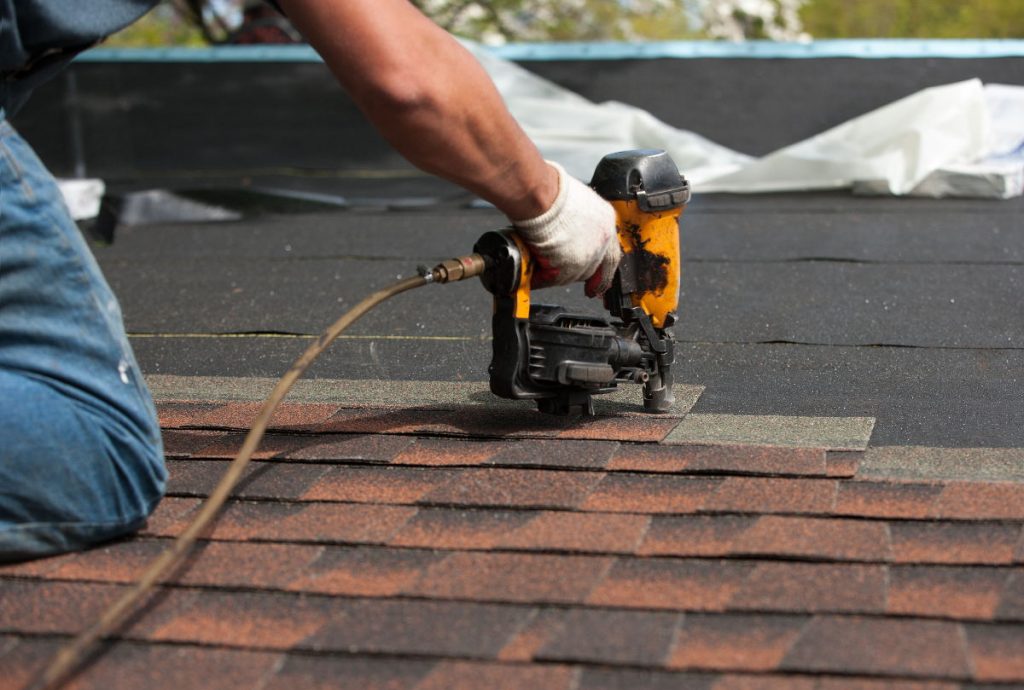
If you can properly identify enough hail damage, your insurance claim may allow you to have your roof completely replaced. This work should always be carried out by a licensed professional contractor. In some cases though, it may be cheaper to fix the damage yourself. Only attempt to do this if you have experience working with the materials in question — most roofing tiles are pricey and surprisingly fragile when being handled, and an amateur can do more harm than good.
For those who aren’t professional roofers themselves, we recommend using tarpaulins to provide temporary cover for parts of the roof that have been hit hardest. This will buy you some time while you arrange to have a pro conduct the repairs that are needed most.
Don’t Bail on Hail Damage
While we can’t honestly recommend DIY hail repair for those without significant roofing experience, we do want to stress that hail damage should never be ignored.
Make sure to check your roof after each time it hails, and learn to recognize the signs of hail damage so that they don’t go unnoticed. If your insurance claim won’t cover enough of the damage to make a full roof replacement affordable and you can’t do it on your own, the most reasonable option is to hire a trustworthy pro for a partial roof replacement.
Trusting this process will keep your home as protected as possible from hail, and prevent you from having to deal with more extensive damage down the road.
Need to get your roof repaired? Have questions about your hail damage? Give us a call at 403-291-3093

